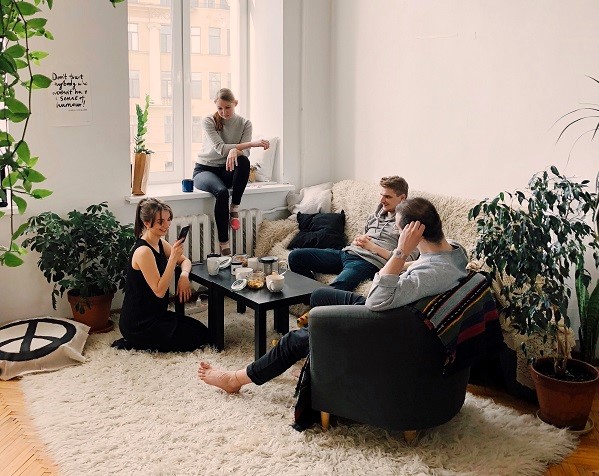Can You Stay In Home During Mold Remediation? Mold remediation is a crucial process for maintaining a healthy living environment, but it often leaves homeowners with a pressing question: is it safe to stay at home during this process? This article explores the various aspects that influence this decision.
When considering mold remediation in your home, the decision to stay or leave hinges on factors like the severity of mold, health risks, and the methods used by professionals.
Mold Remediation: An Overview
Mold remediation has evolved significantly, moving away from disruptive fumigation-like methods to more advanced, homeowner-friendly techniques. Understanding this process is key to making informed decisions about your safety during remediation.
Factors Determining Home Stay During Remediation
Health Risks and Mold Spore Levels: Health risks, such as allergic reactions or respiratory issues caused by mold spores, are critical factors. The higher the spore count, the more advisable it is to vacate the premises.
Extent and Type of Mold Growth: The severity and type of mold infestation can also dictate whether it’s safe to stay. Larger, more invasive mold growths might necessitate leaving, especially if toxic molds like Stachybotrys (black mold) are involved.
Safety Protocols in Modern Mold Remediation
In the world of modern mold remediation, safeguarding the health of homeowners and occupants is paramount. Remediation experts are equipped with sophisticated isolation techniques that involve sealing off the affected area with heavy-duty plastic sheeting and employing negative air pressure systems to prevent cross-contamination. Air scrubbers with HEPA filters are standard equipment; they work tirelessly to filter out mold spores and other particulates from the air, ensuring that the indoor air quality remains uncontaminated throughout the remediation process.
Moreover, professionals strictly comply with the Environmental Protection Agency (EPA) guidelines, which mandate the use of non-toxic, eco-friendly mold cleaning solutions. These solutions are effective at eradicating mold while being harmless to humans and pets. The remediation team also wears personal protective equipment (PPE), including respirators, gloves, and protective suits, to avoid direct contact with mold and chemicals, showcasing a dual commitment to both occupant and worker safety.
Special Cases: When Leaving is Advised
There are circumstances where the risk to occupants’ health outweighs the convenience of staying at home. During severe mold outbreaks, where large areas are affected, or when highly toxic molds like Stachybotrys chartarum (black mold) are present, professionals may advise residents to vacate the property. This is not only to protect them from potential health hazards but also to provide the remediation team with the space and freedom to tackle the problem effectively.
Individuals with allergies, asthma, or immune sensitivities may react adversely even to the safest of mold spores and remediation agents. In such cases, the precaution of leaving the home until the completion of the remediation process is a health-first approach. The remediation service will provide tailored advice, considering the specific health needs of each household member.
Returning Home: Post-Remediation Safety
Once the physical work of mold removal is concluded, the space must be deemed safe for return, which often requires a waiting period. This duration allows any airborne spores disturbed during the cleaning process to settle and be removed by air scrubbers. Typically, a minimum of 24-48 hours post-remediation is recommended, but this can be extended to 72 hours or more for more extensive or severe cases.
A professional post-remediation inspection is the final step before reentry. This involves visual assessments, surface sampling, and air quality tests to ensure the environment meets safety benchmarks. Only when all signs of mold are remediated, and air tests show normal fungal ecology, is it safe for residents to return. This meticulous approach ensures not only the immediate resolution of the mold issue but also contributes to the long-term health and safety of the home’s environment.
Conclusion
Deciding whether to stay at home during mold remediation requires careful consideration of various factors. Professional input and adherence to safety protocols are essential in making this decision.
FAQ Section Can You Stay In Home During Mold Remediation
Q1: How long should you stay out of the house after mold remediation?
It’s recommended to stay out for at least 24-48 hours after remediation, but this can extend up to 72 hours depending on the mold type and treatment scope.
Q2: What are the risks of staying in a house during mold remediation?
Staying can pose health risks due to mold spores and chemical sensitivities, especially in cases of severe infestations.
Q3: Is it okay to live in a house with mold during the remediation process?
While modern remediation techniques are safer, living in a mold-infested house during remediation is generally not advised, particularly for those with health vulnerabilities.
Q4: What precautions should be taken if you choose to stay during mold remediation?
If you’ve decided to remove mould, make sure there is good ventilation and wear protective clothing, such as a shower cap, rubber gloves, eye protection, overalls, suitable footwear and a P1 or P2 face mask (available from your hardware store).
Q5: Can mold return after professional remediation?
Yes, mold can recur if the underlying moisture issues aren’t resolved. Regular inspections and moisture control are crucial to prevent mold from returning after professional remediation.


